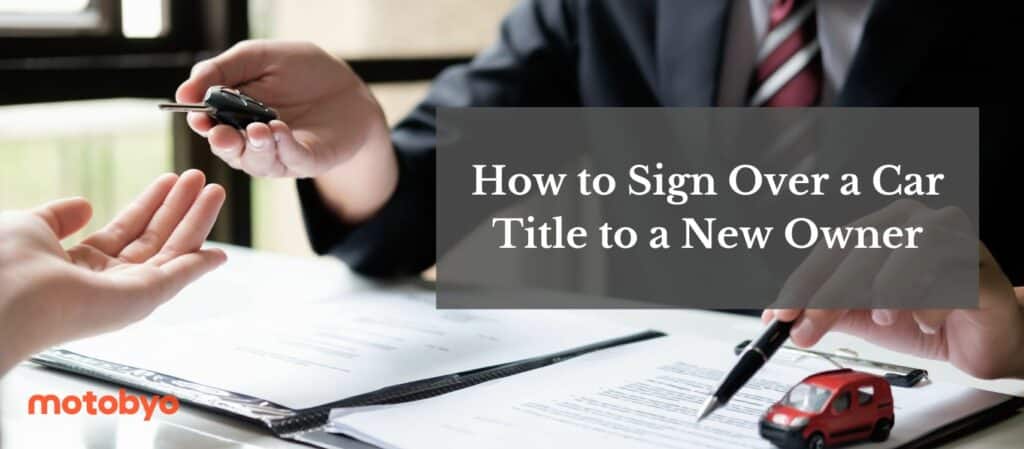Selling your car in a private party sale?
The bill of sale is only part of the process. To legally transfer ownership to the buyer, you also need to sign over the car title. This piece of paperwork officially transfers the responsibility of the car from you to your buyer.
Not sure where to start? Here’s all the title and registration information you need.
DMV Car Title Transfer Process
The process of signing over a title usually begins once your buyer has made payment for the vehicle. To start the title transfer, you need to first find your title document.
Where to find the title when selling a car
If you own your vehicle outright, then you probably have your title stored with other important documents. Or – if the DMV in your state uses electronic car titles – you may be able to access the title digitally. Either way, you need the car title to complete the vehicle sale. So contact your DMV to get a paper version issued if you can’t lay your hands on the original.The details you need to complete on the title document
Okay, so you have your title. What next? Double check that the VIN on your title document matches the VIN on your vehicle’s windshield.- write the odometer mileage reading on the title
- print your name, sign and date the title
- get your buyer to print their name, sign and date the title

What does the buyer have to do?
With both signatures and all relevant details added to the title document, you can proceed with the next stage of the car title transfer. The buyer should make an appointment with their state’s DMV or tag agent right away. They’ll need to take the title paperwork with them and may need to pay a transfer fee and most likely their state sales tax to complete the title transfer process.
- The transfer of ownership form
- The bill of sale, including both the buyer’s and seller’s signatures
- An odometer disclosure
Bear in mind that DMV requirements vary from state to state. For example, in California, you also have to provide a smog certification when signing over a car title. Advise your buyer to double-check requirements when making their appointment.
After meeting with the DMV, the buyer will usually get a temporary registration before receiving the official title in the mail a week or two later.
Signing Over A Car Title With A Loan
If you have a loan on the car title of the vehicle you’re selling, you need to involve your lender in the car title transfer process. That’s because when you have an outstanding auto loan, the lender has possession of the title and effectively owns the vehicle until you clear your loan in full.
To sign over a car title with loans, you first need to know how much you still owe on the vehicle. Early repayment fees and interest charges may apply – so get in touch with your lender before listing your vehicle for sale to get an accurate figure.

Signing Over A Title Listing Two Owners
Own your car jointly with someone else? Then you need to take a look at your title document.Own your car jointly with someone else? Then you need to take a look at your title document.
If it lists your names with an “and” between them, both parties have to sign the title to transfer ownership to the buyer.
If the title lists your names with an “or” between them, only one of the current owners needs to sign the title.
You can then follow the DMV instructions above.
Let Motobyo Handle The Title Transfer For You!




